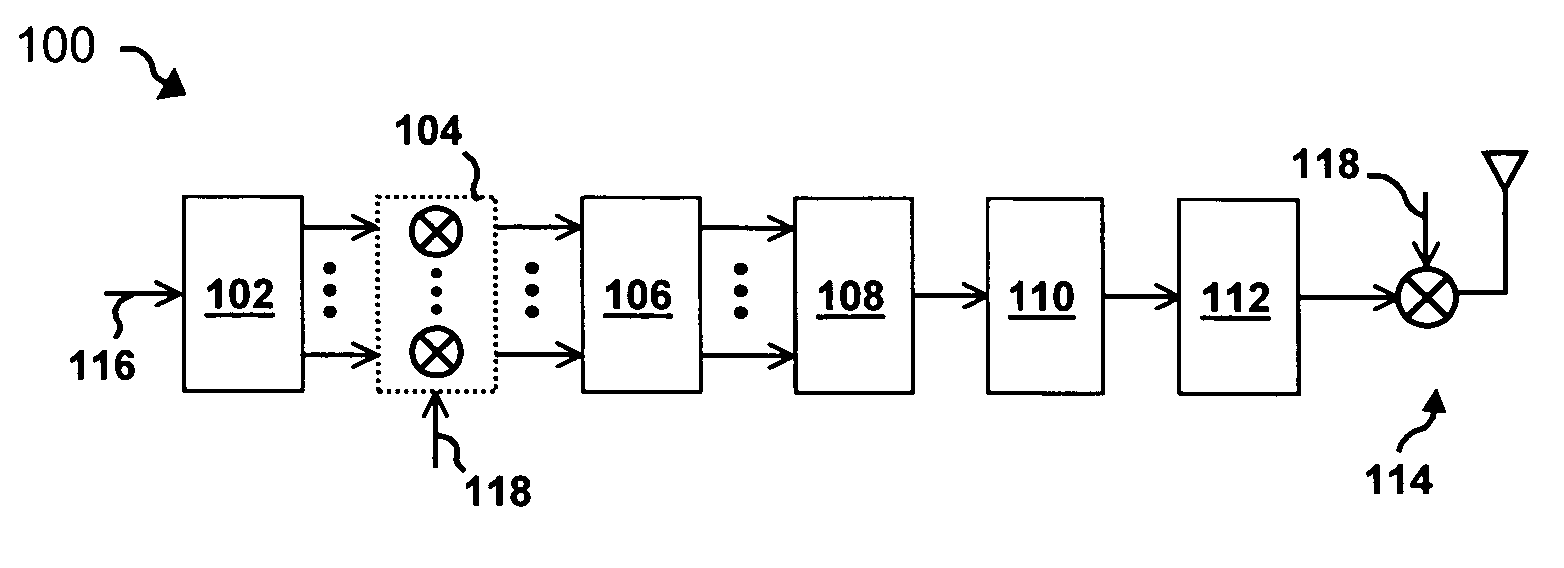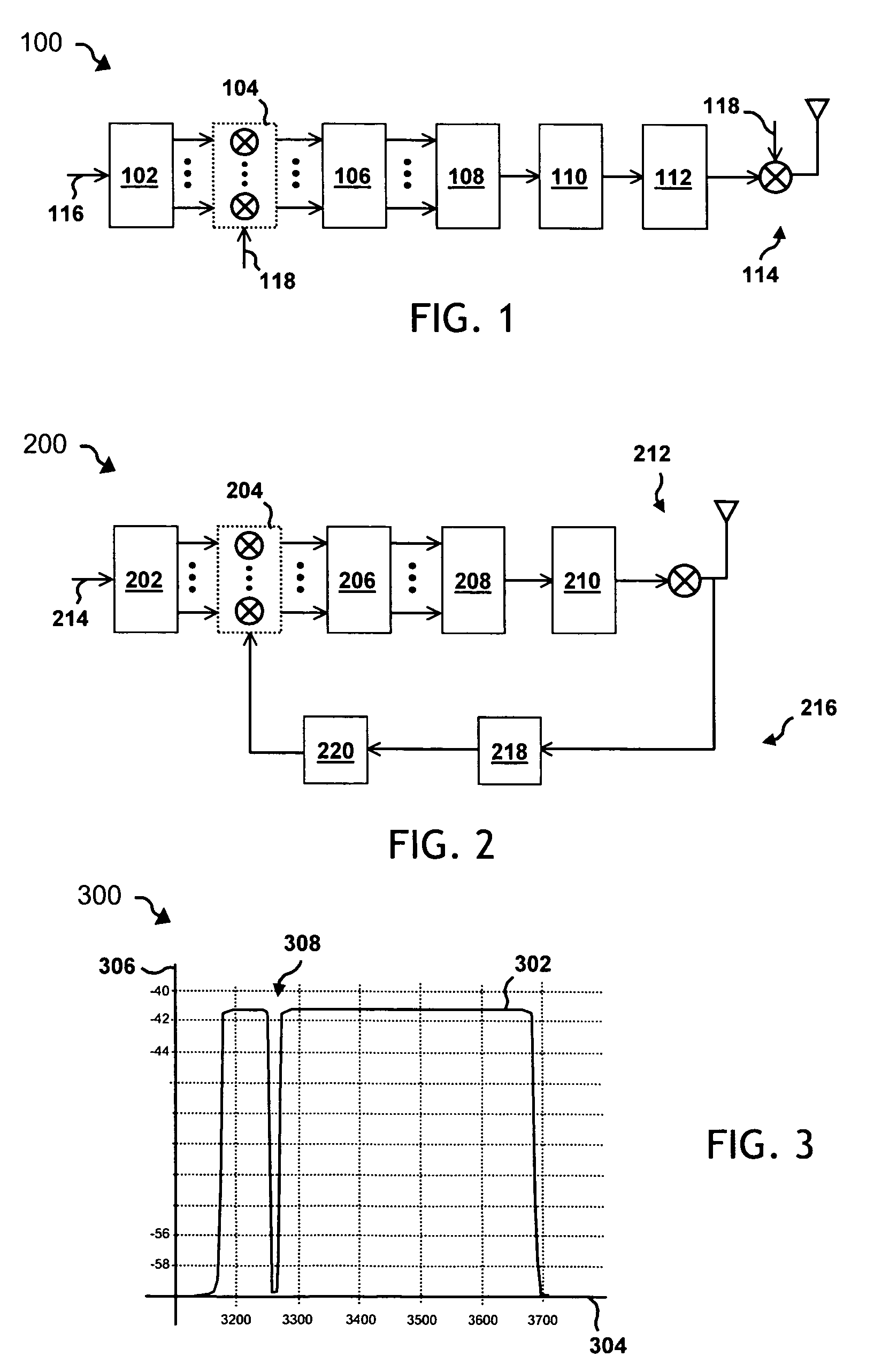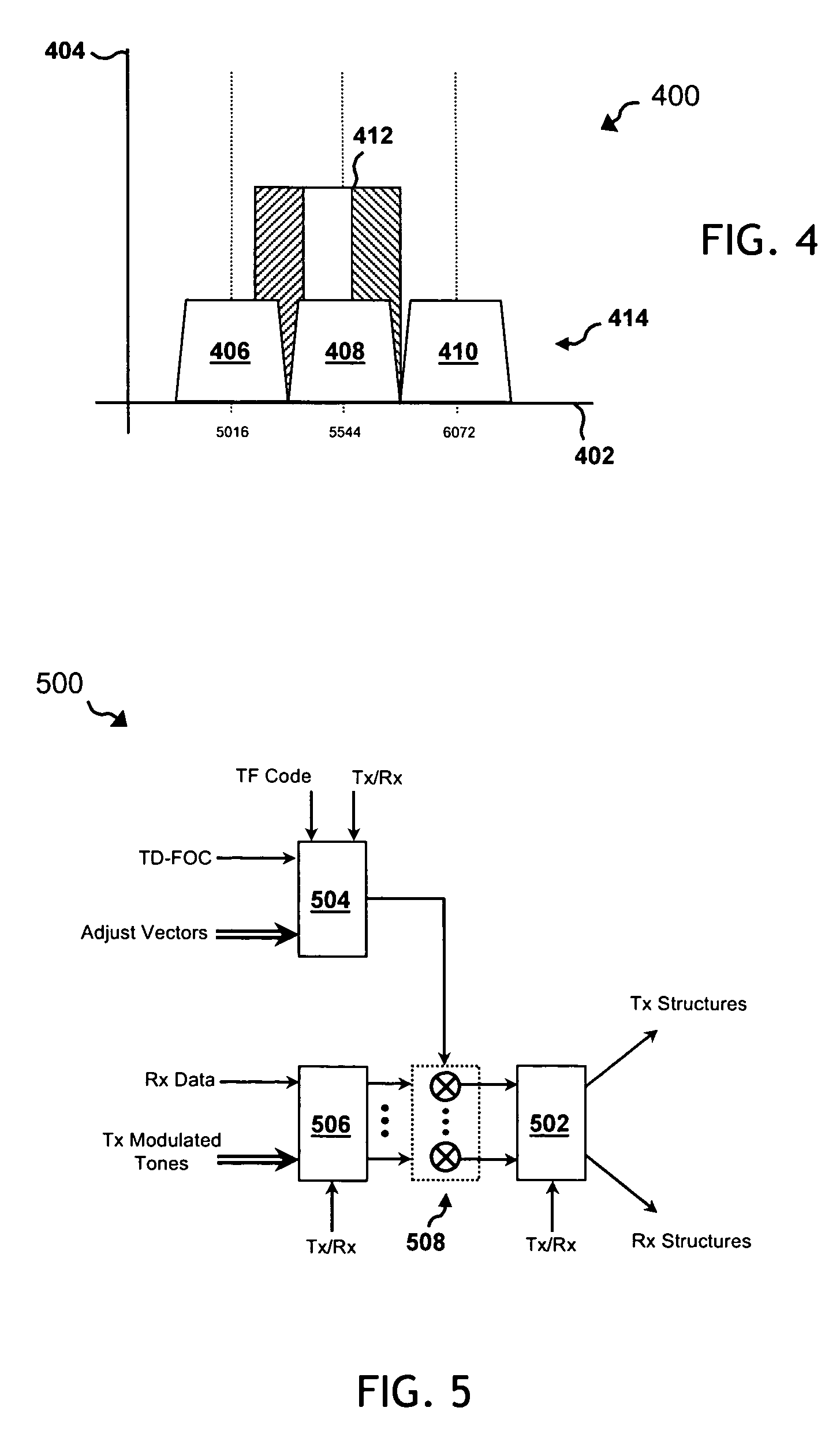Versatile system for signal shaping in ultra-wideband communications
- Summary
- Abstract
- Description
- Claims
- Application Information
AI Technical Summary
Benefits of technology
Problems solved by technology
Method used
Image
Examples
Embodiment Construction
[0021] While the making and using of various embodiments of the present invention are discussed in detail below, it should be appreciated that the present invention provides many applicable inventive concepts, which can be embodied in a wide variety of specific contexts. The present invention is hereafter illustratively described primarily in conjunction with the design and operation of an ultra-wideband (UWB) communications system. Certain aspects of the present invention are further detailed in relation to design and operation of multi-band Orthogonal Frequency Division Multiplexing (OFDM) communications system. Although described in relation to such structures, the teachings and embodiments of the present invention may be beneficially implemented with a variety of data transmission or communication systems or protocols (e.g., IEEE 802.11), depending upon the specific needs or requirements of such systems. The specific embodiments discussed herein are, therefore, merely demonstrat...
PUM
 Login to View More
Login to View More Abstract
Description
Claims
Application Information
 Login to View More
Login to View More - R&D
- Intellectual Property
- Life Sciences
- Materials
- Tech Scout
- Unparalleled Data Quality
- Higher Quality Content
- 60% Fewer Hallucinations
Browse by: Latest US Patents, China's latest patents, Technical Efficacy Thesaurus, Application Domain, Technology Topic, Popular Technical Reports.
© 2025 PatSnap. All rights reserved.Legal|Privacy policy|Modern Slavery Act Transparency Statement|Sitemap|About US| Contact US: help@patsnap.com



